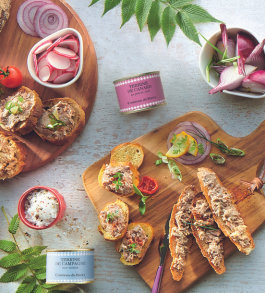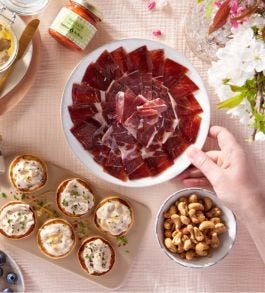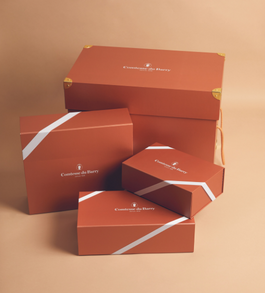We need to use your personal data to make your experience better. To comply with the General Data Protection Regulation, we need to ask for your consent before using your personal data.
A short guide for foie gras lovers: our foie gras tasting tips
All the foie gras cooked by Comtesse du Barry comes exclusively from farm geese and ducks from the South-West who live in the great outdoors. They are always prepared by hand according to centuries-old traditions. No chemical is involved in the preparation of our recipes: zero coloring but above all zero preservatives.
Duck or goose, what differences ?
The classic and frank taste of the duck has convinced a large audience of amateurs while the goose, whose taste is delicate, regains the hearts of a new audience sensitive to its finesse.
When to serve foie gras
At the very beginning of a meal or after an appetizer, when your taste buds are still fresh and ready.
It can also be served on toast (warm is even better) as an aperitif, accompanied by Muscat, Jurançon or Champagne.
At what temperature to serve foie gras ?
Ideally, chill it for several hours in the refrigerator (between +2 and + 4 ° C) and take it out 15 minutes before tasting. Be careful never to place the foie gras in the freezer as this will damage its texture and alter its aromas.
How to cut fatty liver ?
It is usually served in slices about 1 cm thick. They can be cut with very fine wire (a lyre) or with a toothless knife blade dipped in hot water.
Then place the slices on cooled plates.
How to taste foie gras ?
Above all, avoid spreading it. Place the foie gras on a piece of bread and let melt against the palate. The pleasure comes immediately.
It can also be available as an aperitif verrine, salad, omelet, etc.
How to accompany your foie gras ?
 DISCOVER OUR SWEET WHITE WINES
DISCOVER OUR SWEET WHITE WINES
The sweet white wines, thanks to their complexity and their bouquet, go wonderfully with the smoothness of foie gras. Among these, the Sauternes, Monbazillac and Jurançons as well as the late harvests from Alsace are very popular.
Fans swear that the marriage of a great white Burgundy brings character to the sweetness of foie gras.
As for red wines, the combination can be perfect with truffled duck foie gras or with foie gras served hot.
Which bread to choose with foie gras ?
Toasted sandwich bread and brioche bread are popular with some, but their smoothness can be detrimental to foie gras.
Country bread is a favorite with its dense crumb and crunchy crust, while the acidity of rye bread is perfect support for duck, less for goose. The chestnut flour bread with a round and sweet fragrance offers an interesting counterpoint to duck foie gras and the gingerbread is an original companion to open up on velvety and sweet flavors.
Always lightly toasted, the bread will be chosen according to the taste and spirit of the meal.
Should you add salt to your foie gras ?
Yes, favoring fleur de sel. Its iodized taste ideally season a slice of foie gras and its crystalline aspect provides a nice counterpoint to the velvety of foie gras. ...
And pepper ?
It is a great friend of foie gras because it gives it a tangy and acid note. Sarawak pepper adds a nuanced flavor, Cubeb pepper is round, slightly bitter while Java long pepper has an almost sweet flavor.
As for white Penja pepper, this white pepper with a fine, velvety and warm flavor has been adopted by the great chefs of French gastronomy.
Which fruits to combine foie gras with ?
Fresh fruits (especially figs, pears and grapes) or dried fruits (apricots, dates, prunes), chutneys, compote, marmalades or jams make up a choice score for the most demanding gourmets.















